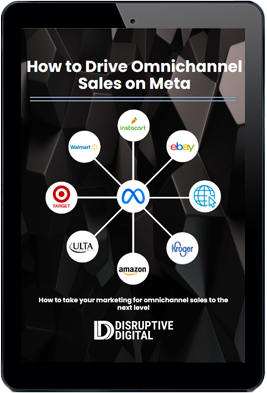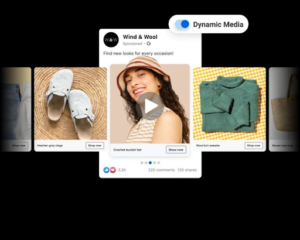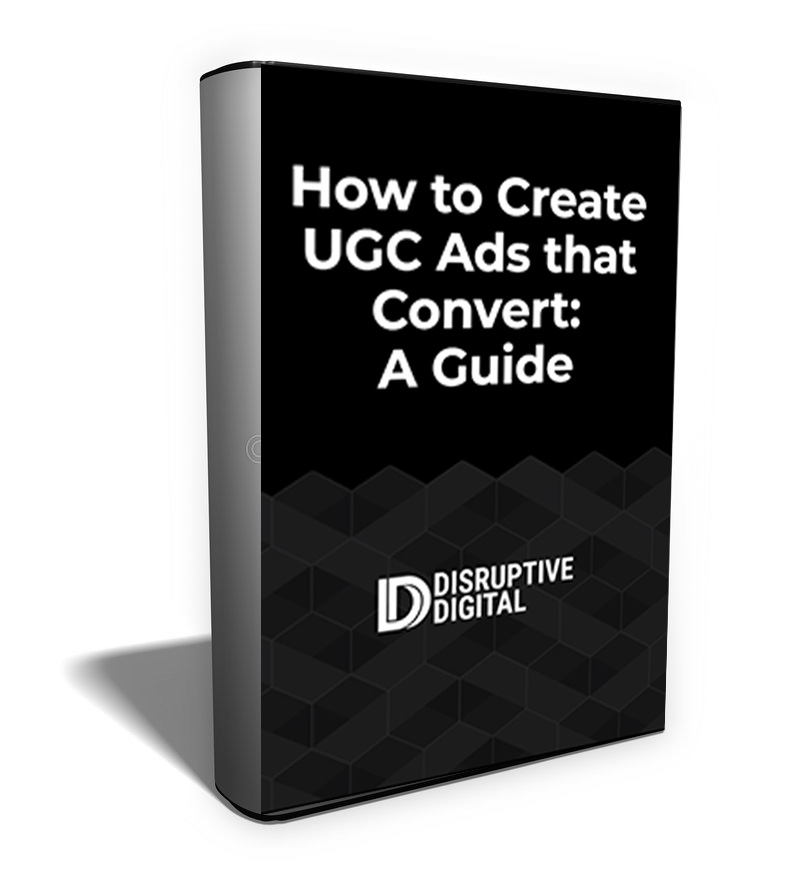Few digital marketing concepts are as mysterious and misunderstood as auction bidding. On Meta, which powers ad networks like Facebook and Instagram, you need to win a real-time, continuously running auction against other brands competing for eyeballs from the same audience. But how that happens is one of the best-kept secrets in the ad space.
In reality, though, Meta auction bidding is more defined than you might think. Approach it the right way, and you can reliably outbid your competition even without outspending them. In this guide, we’ll demystify the process, helping you not just understand the process but make tangible improvements to your ad strategy to improve reach and results.
FREE GUIDE
How to Drive Omnichannel Sales on Meta
11 Steps + 4 Advanced Tactics to Take Your Marketing for Omnichannel Sales to the Next Level.
Few digital marketing concepts are as mysterious and misunderstood as auction bidding. On Meta, which powers ad networks like Facebook and Instagram, you need to win a real-time, continuously running auction against other brands competing for eyeballs from the same audience. But how that happens is one of the best-kept secrets in the ad space.
In reality, though, Meta auction bidding is more defined than you might think. Approach it the right way, and you can reliably outbid your competition even without outspending them. In this guide, we’ll demystify the process, helping you not just understand the process but make tangible improvements to your ad strategy to improve reach and results.
How the Meta Auction Chooses Winning Ads
Most digital advertisers operate under a false assumption. And to be sure, it’s tempting to assume that the brand that spends the most will ultimately receive the ad placement. But in reality, that’s far from the case.
Instead, Meta uses three core variables to determine which brands will win out to place their messaging in the limited ad space. It’s a three-piece value equation:
- Advertiser Bid, which describes how much you choose to pay to hit your optimization goal.
- Estimated Action Rates, which is the likelihood that the ad impression will lead to a result matching your optimization goal.
- User Value, which estimates the quality level of the ad itself and how interesting the audience will find it.
These three components are by no means equal. But they all matter as you look to get your ads in front of as many members of your target audience as possible. If more users take action on your ad, or the ad is more relevant to them, you can actually pay less than your competitors while winning the Meta auction.
The 3 Components of a Winning Auction Bid
Time to break it down into a bit more detail. Meta uses a distinct set of metrics to determine your bid’s value according to each of the above three components. Understanding what they are helps you optimize your ad and bid to win the auction as much as possible.

Advertiser Bid
This is the media and budget part of the equation. It’s also the most well-known of the variables in the auction. To rank it, Meta uses these metrics:
- Bid Amount
- Bid Type, like video view vs. conversion
- Overall Advertising Budget, typically by day.
Estimated Action Rates
Every Meta ad is set up with a specific goal in mind. In the auction, the platform judges each bid based on how likely the ad is to accomplish that goal. Depending on your goal, it might look at metrics like:
- Estimated click-through rate
- Estimated conversion rate
- Conversion signal strength via the pixel/CAPI
Naturally, these metrics depend heavily on your ad setup and, more importantly, your signal strength. If you don’t accurately track conversions on your website back to your ads through the Facebook pixel or conversions API, the platform may think your ads drive fewer conversions than they do and downrank your bid accordingly.
User Value
Meta has a tangible stake in showing only high-quality ads that downgrade user experience on its networks. This final component estimates that quality metrics like:
- Positive ad engagement such as likes, comments, and actions users take after clicking through to your landing page.
- Negative ad engagement, like hiding the ad or reporting the advertiser.
- The landing page experience after clicking through your ad, including variables like load times, bounce rates, dwell times, and more.
Keep in mind that this is not a perfect setup. For example, Meta cannot distinguish between positive and negative comments so if someone leaves a negative comment, it still counts as positive ad engagement.
How Meta Values the 3 Components of Auction Bidding
While Advertiser Bid, Estimated Action Rates, and User Value all matter, Meta doesn’t equate them all. Instead, it follows a basic equation to arrive at the total value of any given auction:
Total Value (Advertiser Bid x Estimated Action Rate) + User Value (on a scale of 1 through 10)
All advertisers bidding on impression slots run through the basic equation. The winning ads then get placed in the auction, while the losing ads have to bid again in a future auction.
This equation can create plenty of scenarios in which the winning bid is not necessarily the highest-winning bid.

Note that the actual price of the ad does not necessarily equal the advertiser’s bid. That’s because Facebook uses an auction type called Vickrey–Clarke–Groves (VCG) bidding, which penalizes artificial bid inflation and drives each bidder to bid only what they’re willing to pay.
How Conversion and Click-Through Rates Influence Your Auction Performance
Estimated Action Rate is a complex variable of total bid value, but its most important components are conversion rate and click-through rate. An understanding the impact that these components have on your bid can drive home just how much your performance matters:

Advertiser B is near the bottom of the group in their dollar bids. But because their conversion and click-through rates outpace their competition, they win the bid for one of the two impression slots in the platform.
Winning the Meta Auction With Smarter Bids, Better Ads, and More Value
A consistently successful auction bid strategy on Meta requires a focus on all three of its components. Improving your Advertiser Bid means spending more and spending smarter. Meanwhile, improving Estimated Action Rates and User Value requires improving the signal flow of your data, your creative, and your web experience. Let’s dig into each of these components in more detail.
Improve Your Advertiser Bid By Spending More and Spending Smarter

It might not be the only variable, but advertisers with higher bids still have a higher chance of winning an auction. That said, how you plan your budget matters at least as much as the total budget spent. That means following a few important best practices:
-
- General best bid practices that follow the Meta Power 5 and Meta Performance 5 guidelines to leverage recommended objectives and optimizations.
- Account simplification, with a learning phase at reduced investment followed by broad targeting and a simplified account structure to maximize efficiencies.
- Automation, leveraging AI-optimized Advantage+ placements in shopping, catalog, app, and other campaigns.
Combine it all, and your ad has a good chance to win plenty of Meta auctions. But of course, Advertiser Bids are just part of the larger equation; improving your Estimated Action Rates and User Value matters just as much.
To get there, you’ll need to improve the data quality your website feeds back to your Meta account. But both Estimated Action Rates and User Value can also benefit from improved ads and improved website experience to drive up your bid quality.
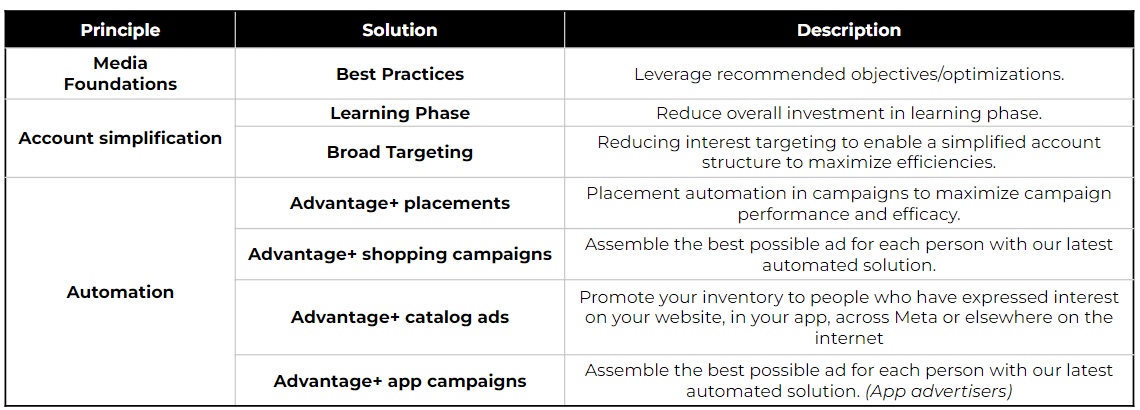
Enhance Your Signal Flow
If Meta judges your bid based on the results your ads get, you need to make sure that the platform can “see” everything a user does after clicking on an ad. That means improving the strength of your data flowing to Meta’s ad platform.
At worst, imagine a Meta pixel on your website that matches on only 70% of your conversions. The platform now believes that your conversion volume is 30% lower than it actually is, which reduces your Estimated Action Rate and results in fewer winning bid opportunities.

To fix these types of issues, you can rely on two elements: data foundations and data quality.
-
- A focus on data foundations makes sure that the information flows back naturally from your website. That includes setting up pixel events across the entire customer journey, turning on advanced matching to increase match rates, and creating a more reliable connection from your server to the delivery system through Meta’s Conversion API.
-
- Through data quality, you can ensure that the data feeding back into Meta is correct. Aim for an event match quality of good or great. If you’re an e-commerce advertiser, make sure your catalog match quality is as high as it could be.
Get these two components right, and Meta can get both your full data and the right data in place. That ensures they track every relevant action your audience takes, increasing your Estimated Action Rate score.

Build Better Creative to Drive User Actions and Value
Creative can matters, and not just because your audience likes seeing good ads. In fact, your creative can impact your Estimated Action Rate by 50% and your User Value by 10%.
That’s not just positive. Bad creative can swing as much as 50% and 10% in the wrong direction, respectively.
To get the most out of your creative, avoid creative fatigue. Meta analysis shows that after four repeated exposures to the same creative, Meta campaigns tend to see a 40% drop in click-through rate and 60% drop in conversions:
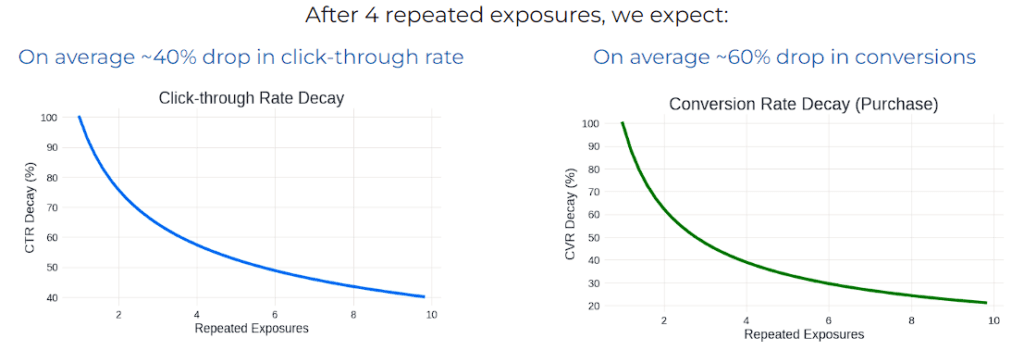
In other words, every time your audience sees your ad, they’re just a little less likely to click on it than they were before. And again, three best practices can help you maximize your creative within Meta’s bidding system:
- Put creative foundations in place. All creative should be optimized for mobile devices and customized for their respective audience and placement, to run successfully in as many places as possible.
- Aim for creative differentiation. The more versions of your creative, the better. You can achieve that through paid partnerships in which your ads appear in the feeds of creators, format diversification from static images to videos and carousels, and message diversification to hit the right value propositions and pain points for your different users.
- Continuously test your creative. A strong testing cadence continues to give you new ad variations, as well. According to one Meta study, the fastest-growing advertisers test 11x more ads per month than their competitors.
Following these best practices plays a core role in helping you improve your conversion and click-through rates, driving your Estimated Action Rate upward and improving your bid quality as a result.
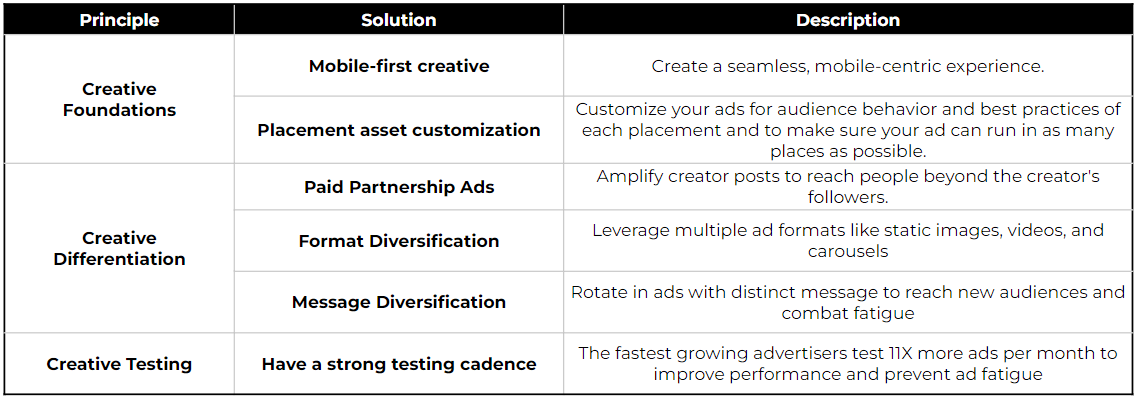
Increase Your Website Experience Post-Click
The final piece of the equation, and one that matters for both your Estimated Action Rates and your User Value, revolves around what happens once a user clicks on your ad.
Meta will prioritize ads that follow up great creative with a positive website experience. On the other side of the coin, a bad web experience can’t save even high monetary bids on the platform.
Research shows that 53% of mobile users will leave a website that takes more than three seconds to load. If we assume that even 30% of your ad audience doesn’t find your website loading quickly enough, you’ll naturally see lower conversion values, dropping your Estimated Action Rates.
But it goes beyond that. A high website bounce rate also negatively impacts Meta’s judgment of your ad’s User Value, further dropping your chances in the auction.
Foundationally, that means getting the technical components of your website just right. But the quality of the landing page your ads lead to also matters. We recommend following the Three C’s of Landing Pages:
- Continuity, ensuring that your products, messages, promotional offers, and pricing are consistent between the ad and the destination page.
- Content, which needs to clearly and concisely convey the value proposition and include engaging visuals, like images and videos, to drive consideration.
- Call to Action, a button that should be highly visible, relevant to the content, and span the width of the screen to make it easier to find for mobile users.
Finally, it’s time to optimize your buy flow experience. Users should be able to move from ad to purchase easily and intuitively on their phones, even and especially if that process goes beyond the initial landing page.
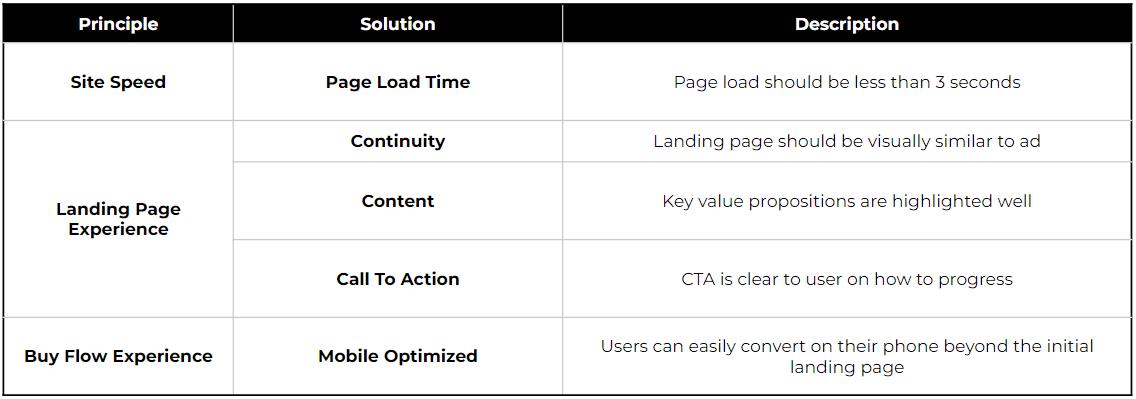
Ready to Win Your Next Meta Auction?
It’s time to demystify the Meta auction. It’s not a black box, and it’s not just about the money you’re throwing into the ring. Instead, maximizing your chances of a winning bid includes a few important components:
- Spend smarter, following media best practices to ensure more bidding opportunities.
- Optimize your signal strength by making sure all relevant user actions on your website flow back to Meta for evaluation.
- Build great creative, then test and update that creative frequently to maximize relevance and reduce ad fatigue.
- Enhance your website experience, particularly for mobile users looking to learn more, convert, and buy on and beyond your landing page.
Take these steps, and you no longer need to be the highest bidder in your Meta auctions. Instead, you can maximize your budget to ensure your audience always sees the most relevant, updated, and actionable ads.
The good news: in addition to helping you win more bids, all of these steps are best practices for both Meta and your own advertising strategy as a whole. They all lead to increased user satisfaction along with more and better conversions.
That’s why the time to implement them is now. Build your Meta ad strategy with these factors in mind, and you’ll be set up for long-term success in driving conversions and growing your business.




